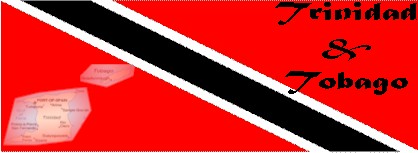|
| Port of Spain | Get your free email with |
|
Travel Timeline Bird/Flower Political Arena
|
CIA FactBook Library of Congress Study The two islands located off the northeast coast of South America, near Venezuela, is known as the independent republic of Trinidad and Tobago. Trinidad, the mainland, is the fifth largest island of the West Indies. It is crossed from west to east by three low mountain ranges. The name Trinidad was given by Columbus when he first saw the three mountain peaks from the southeastern coast. Twenty miles northeast of the big island is the mountainous, smaller land of Tobago (originally Tobaco). These islands are eleven degrees north of the equator; thus, they do not have the threat of hurricanes as most islands of the Caribbean do. The capital city, Port of Spain, is the largest city on the islands where most of the population resides. This harmonious country is greatly known for its calypso music and steel bands. Trinidad was first settled by the Spanish and French, but was later ruled by the British. Tobago, on the other hand, passed through various rulers and was given to the British in 1814. Trinidad and Tobago became an independent nation under the Commonwealth in 1962. In 1976, it was declared a republic. The original inhabitants of the island were the Arawak-speaking Indians. Today, the majority of the population is black, numbering more than half. East Indians, descended from the laborers brought from India as sugarcane estate workers, comprise almost forty percent. A smaller percentage of Chinese, whites and people of mixed ancestry also make up the republic. Christianity and Hinduism are the main religions, with Islam as a minor. |
|||


